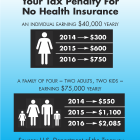Environmental Health
Asthma ER Visits And Hospitalizations Drop In Many Communities
|
The rates of asthma-related emergency room visits and hospitalizations dropped in many Connecticut communities, the latest data from the state Department of Public Health show. Overall, 58 percent of communities saw a decrease in the age-adjusted rate of emergency room visits, while 63 percent saw a decrease in the rate of hospitalizations for asthma, according to a C-HIT analysis of the data. Some 36 percent saw improvement in both areas. The data compares age-adjusted rates for each town for 2005-2009 and for 2010-2014 per 10,000 people. Meanwhile, the state’s overall rate for emergency room visits in 2014 was lower than recent years but still was higher than it was 10 years ago.





